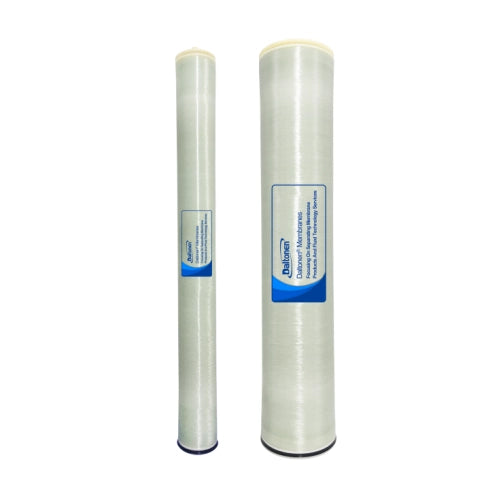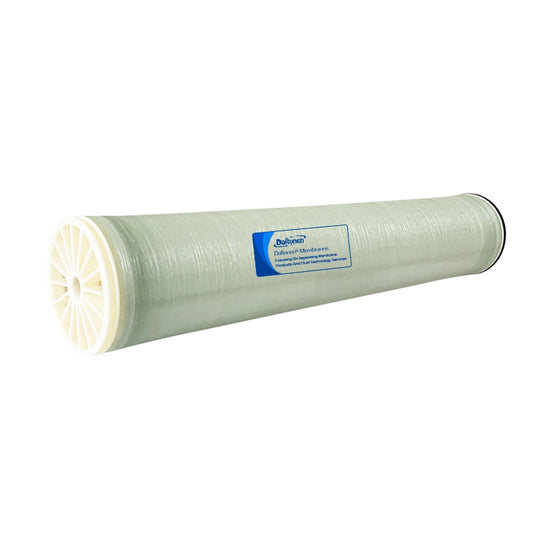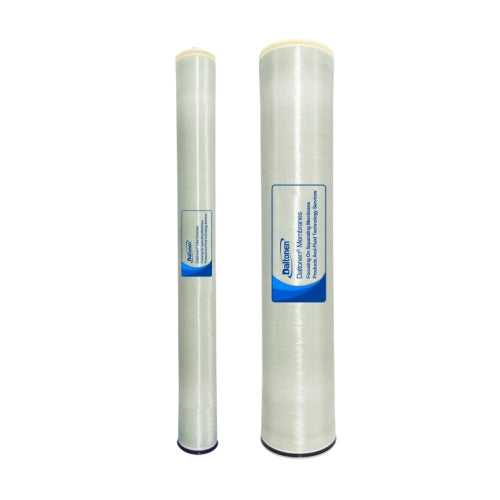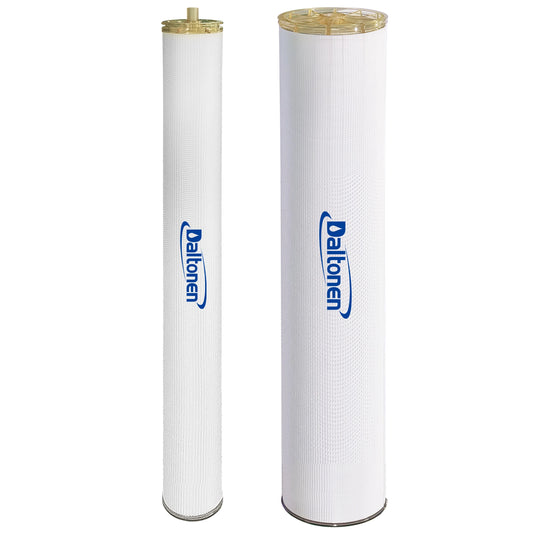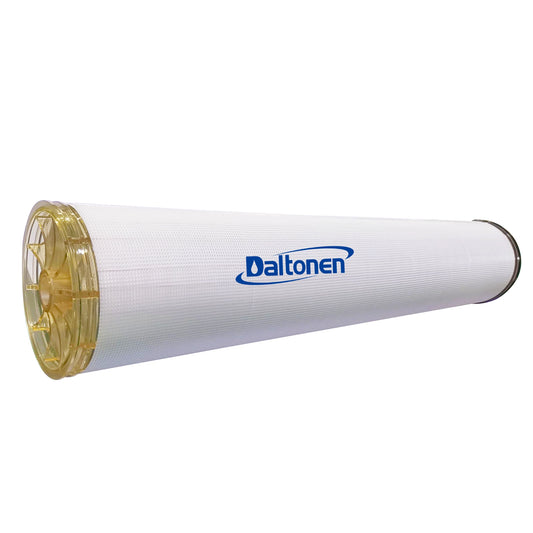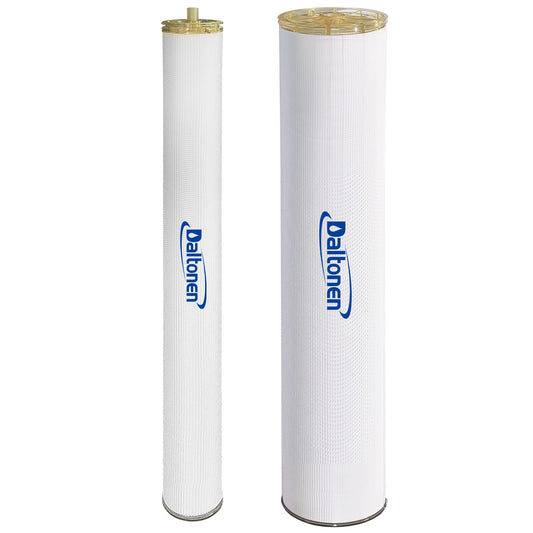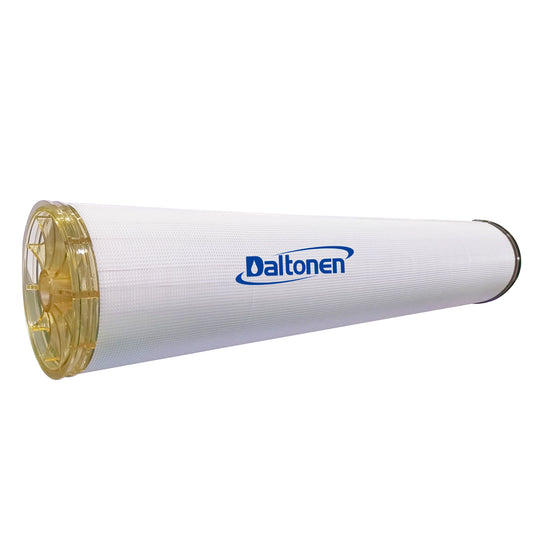Tubular Ultrafiltration (TUF) Membrane Process Design for Landfill Leachate Treatment
Here is the professional English translation of the Tubular Ultrafiltration (TUF) Membrane Process Design for Landfill Leachate Treatment:
Project Background
-
Water Characteristics:
- COD: 5,000–60,000 mg/L │ NH₃-N: 1,000–3,000 mg/L │ SS: 500–5,000 mg/L
- Contains heavy metals (Zn, Pb, Cr), oils, and refractory organics
-
Treatment Targets:
- Effluent compliant with Standard for Pollution Control on the Landfill Site of Municipal Solid Waste (GB 16889-2008)
- TUF permeate: SDI₃≤5, SS≤10 mg/L (qualified feedwater for subsequent RO/NF)
-
Process Positioning:
"Biological Treatment + Tubular UF" core process, replacing traditional secondary clarifiers for zero sludge discharge
Full Process Flow
graph TB
A[Raw Leachate Equalization Tank] --> B[Coagulation-Sedimentation Pretreatment]
B --> C[Anaerobic Reactor]
C --> D[Aerobic MBR Tank]
D --> E[Tubular UF System]
E --> F[TUF Permeate Tank]
E --> G[Sludge Thickening & Dewatering]
F --> H[Advanced Treatment Units]

I. Core Unit Specifications
1. Pretreatment System
| Unit | Parameters | Function |
|---|---|---|
| Coagulation-Sedimentation | PAC + PAM (PAC 300 ppm, PAM 1 ppm) | Remove colloids/SS, reduce membrane fouling |
| DAF (Dissolved Air Flotation) | HRT=20 min | Separate oils and light suspended solids |
| pH Adjustment | H₂SO₄/NaOH → pH 6.5–7.8 | Protect microbial activity & membrane materials |
2. Biological Treatment
- Anaerobic Process: IC reactor (organic loading: 10–15 kg COD/m³·d)
-
Aerobic Process: MBBR + Tubular UF integrated MBR (DO=2–4 mg/L, MLSS=12–18 g/L)
Innovation: Secondary clarifier eliminated; sludge directly recycled to TUF system
3. Tubular UF System (Core Unit)
| Parameter | Value/Specification |
|---|---|
| Membrane Material | PVDF (acid/alkali/oxidant resistant) |
| Pore Size | 0.02–0.1 μm |
| Diameter/Length | Φ8–12 mm × 3–6 m (standard module) |
| Operation Mode | Cross-flow (velocity: 3–5 m/s) |
| Flux | 40–70 LMH (L/m²·h) |
| TMP (Transmembrane Pressure) | 0.2–0.5 MPa |
| Cleaning Frequency | Physical backwash every 2h; CIP every 7–15 days |
Cleaning Protocol:
- Physical Cleaning: Combined air-water backwash (compressed air + permeate)
-
Chemical Cleaning:
- Alkaline: 0.5% NaOH + 0.3% NaClO (remove organics/biofilm)
- Acidic: 1% oxalic/citric acid (remove inorganic scaling)
II. Key Equipment Selection
| Equipment | Specifications | Qty |
|---|---|---|
| Tubular UF Modules | Membrane area 40 m²/module, 0.6 MPa | 6 modules |
| Recirculation Pump | Q=50 m³/h, H=25 m, plastic-lined | 2 sets (1W+1S) |
| Backwash Pump | Q=30 m³/h, H=40 m | 1 set |
| CIP Cleaning Skid | Acid/alkali tanks + heater (40°C) | 1 set |
| Sludge Dewatering Press | Filter press (moisture ≤60%) | 1 set |
III. Anti-fouling Strategies
-
Flow Channel Optimization:
- High cross-flow velocity (>3 m/s) scours membrane surface
-
Intelligent Pulsed Backwash:
- Auto air-water backwash every 30min (0.3 MPa air + 0.4 MPa water)
-
Sludge Concentration Control:
- Maintain MLSS=15 g/L in MBR; auto-discharge excess sludge to dewatering
IV. Performance & Economics
| Parameter | Treatment Efficiency |
|---|---|
| TUF Permeate SS | ≤5 mg/L |
| COD Removal (Bio + TUF) | ≥98% (40,000 mg/L → 800 mg/L) |
| Ammonia-N Removal | ≥99% (2,500 mg/L → 15 mg/L) |
| Operating Cost | 4.5–5.3 USD/m³ (energy/chemicals/depreciation) |
Cost Breakdown:
- Energy: 8–10 kWh/m³ (mainly recirculation pumps)
- Chemicals: PAC/PAM/cleaners ≈ 1.7 USD/m³
- Membrane replacement: 0.7 USD/m³ (5-year lifespan)
V. Concentrate Treatment Options
-
TUF Reject Stream Management:
- Recycle to anaerobic reactor (enhance carbon utilization)
- Evaporation-crystallization (MVR evaporator → mixed salts)
- Advanced oxidation: Fenton (H₂O₂/Fe²⁺) or catalytic ozonation
Process Advantages
-
Tolerance for Extreme Feed:
- Handles shock loads: SS≤20,000 mg/L, oils≤500 mg/L
-
Extended Operation Cycles:
- 50% fewer CIPs vs. spiral-wound membranes; lifespan ≥5 years
-
Modular Scalability:
- Single unit capacity: 50–200 m³/d; parallel scaling for large projects
-
Sludge Minimization:
- Zero excess sludge discharge (full recycling + dewatering)
Applications:
- Municipal landfill sites │ Waste-to-energy plants │ Hazardous waste facilities
- Particularly suitable for aged landfill leachate (high salinity, low biodegradability)
Note: Design parameters (e.g., flux, MLSS) must be adjusted based on leachate age (fresh/medium/stable). Pilot testing is essential to optimize protocols. For RO feedwater hardness reduction, add an ion-exchange softener post-TUF. All emissions comply with ISO 14001 and EPA 503 standards.
